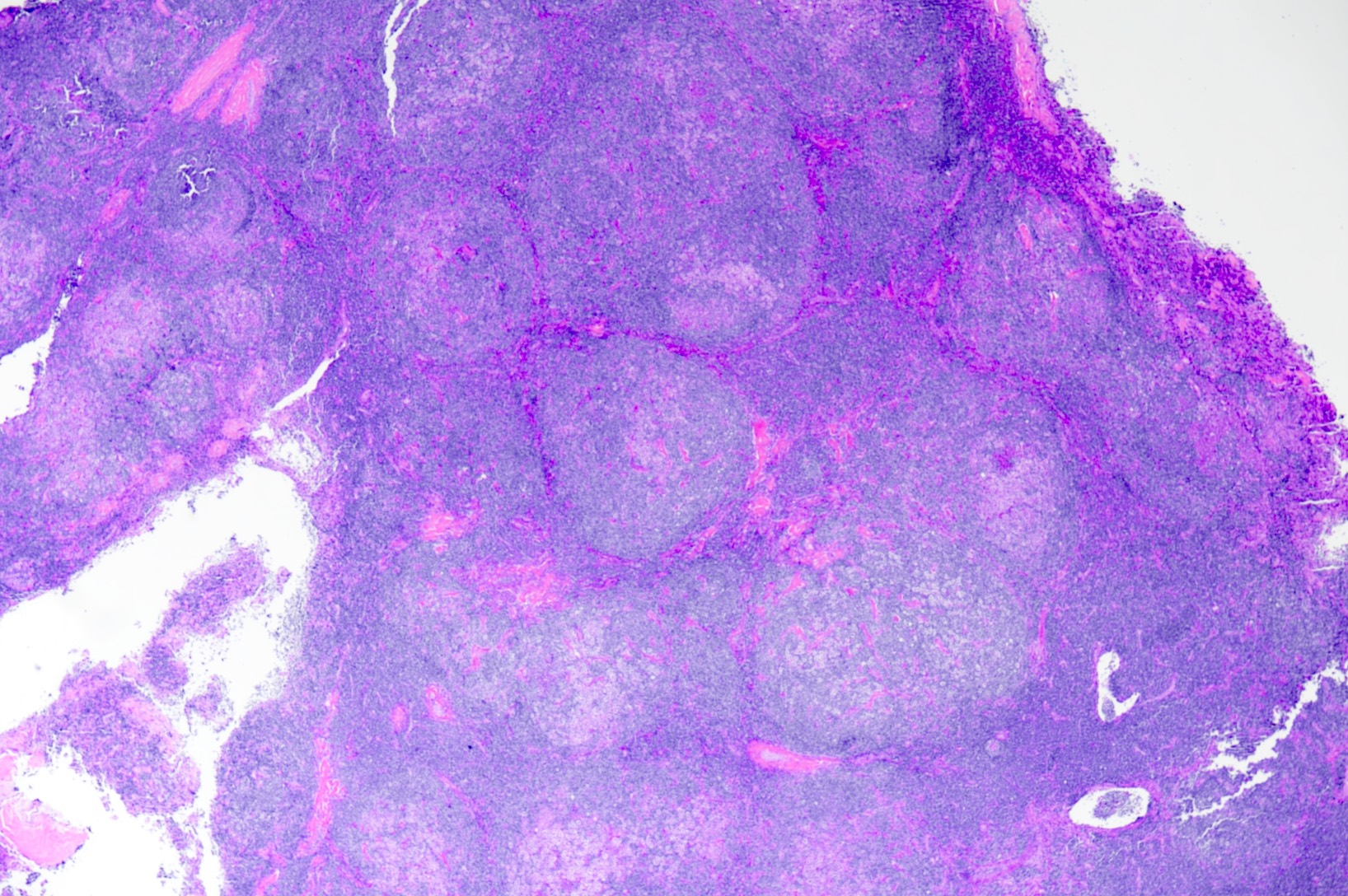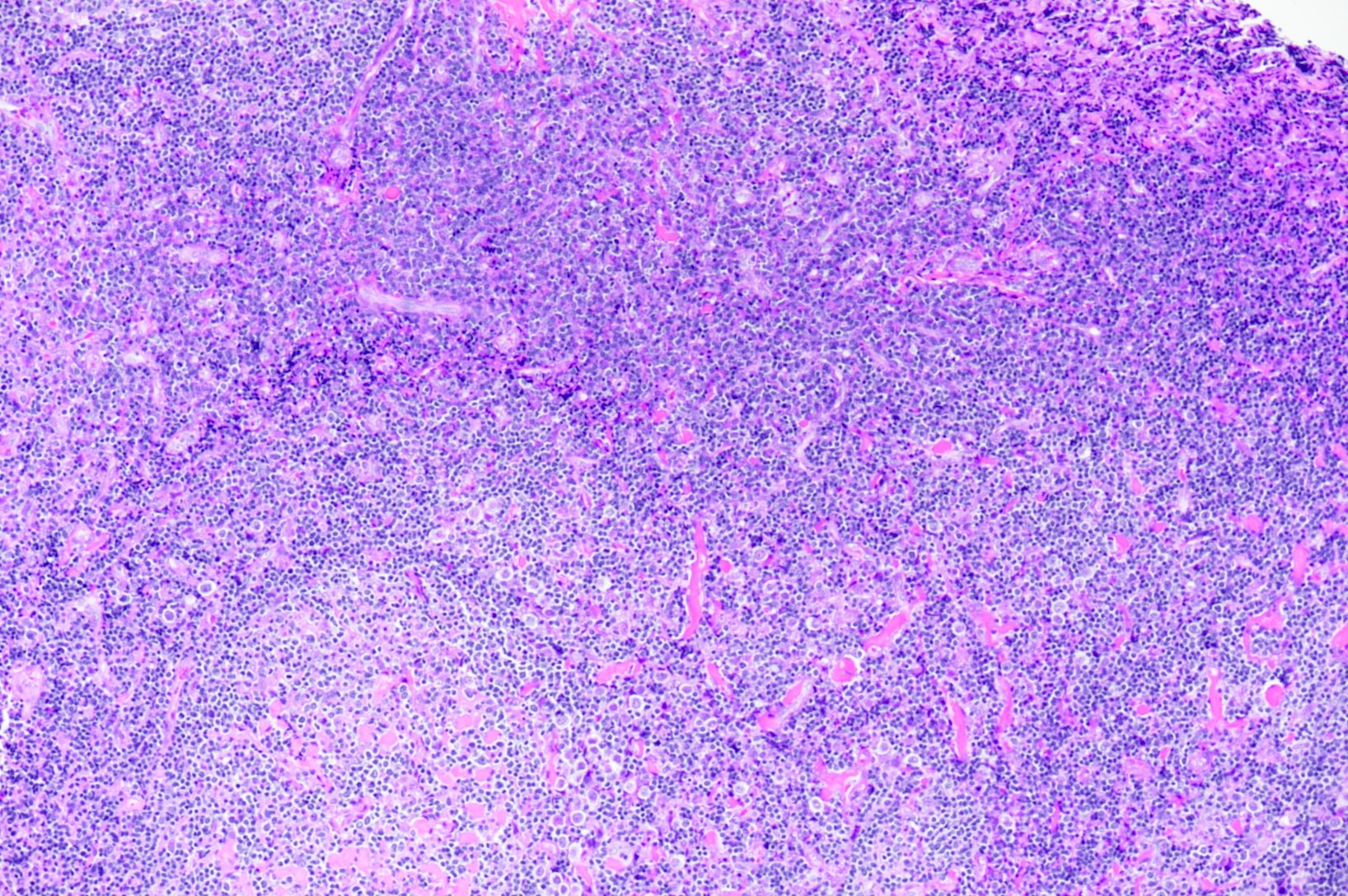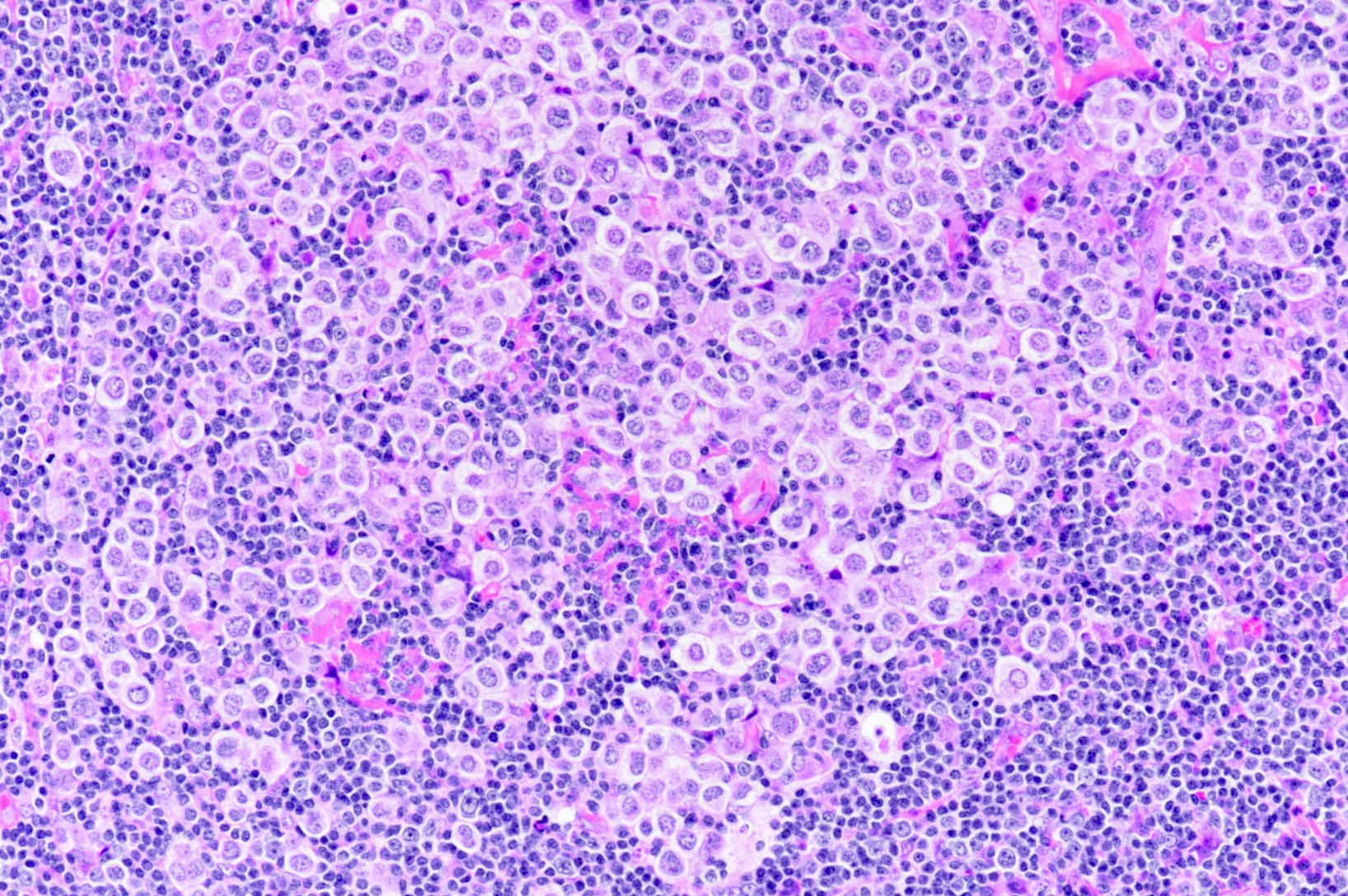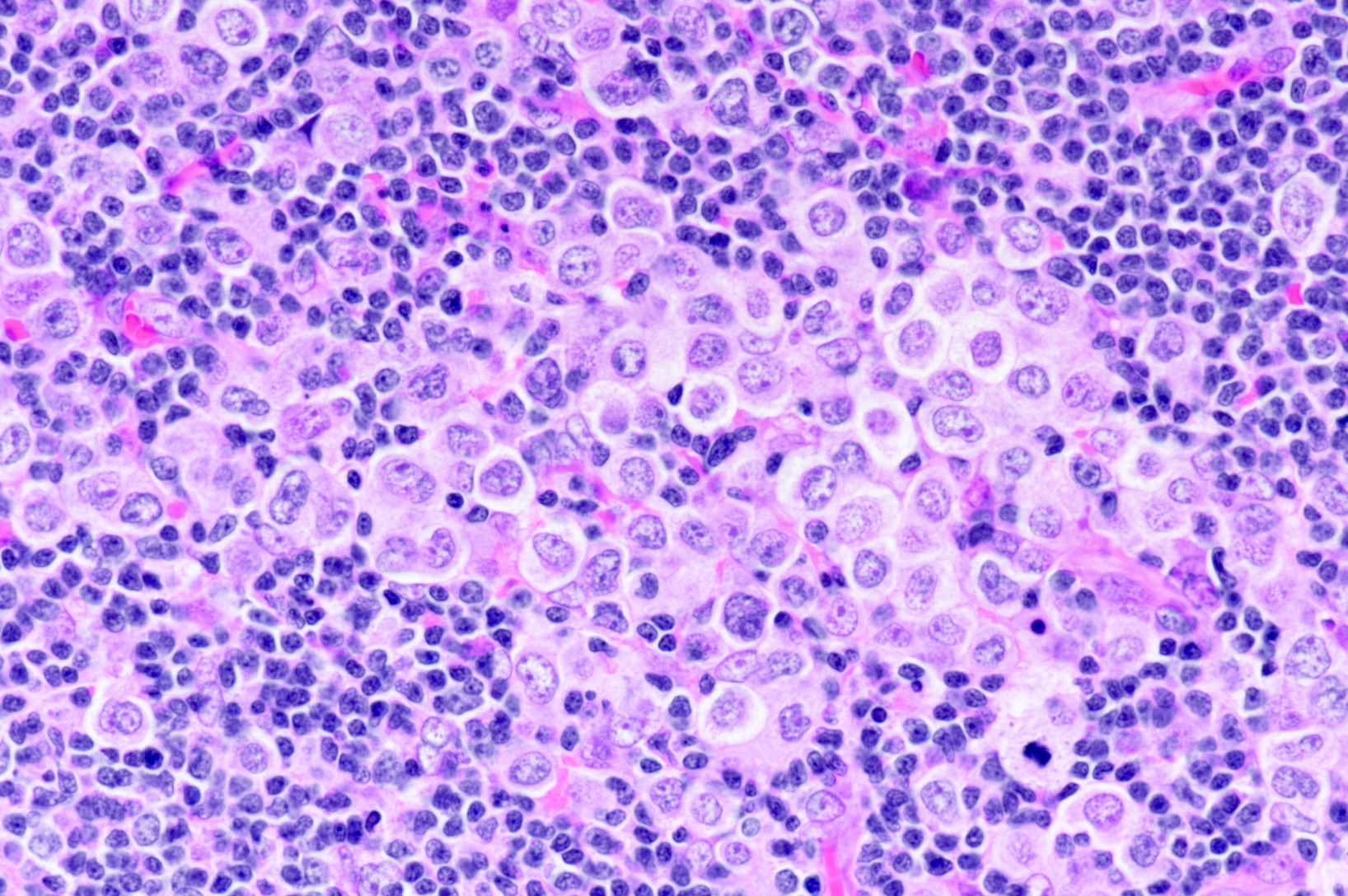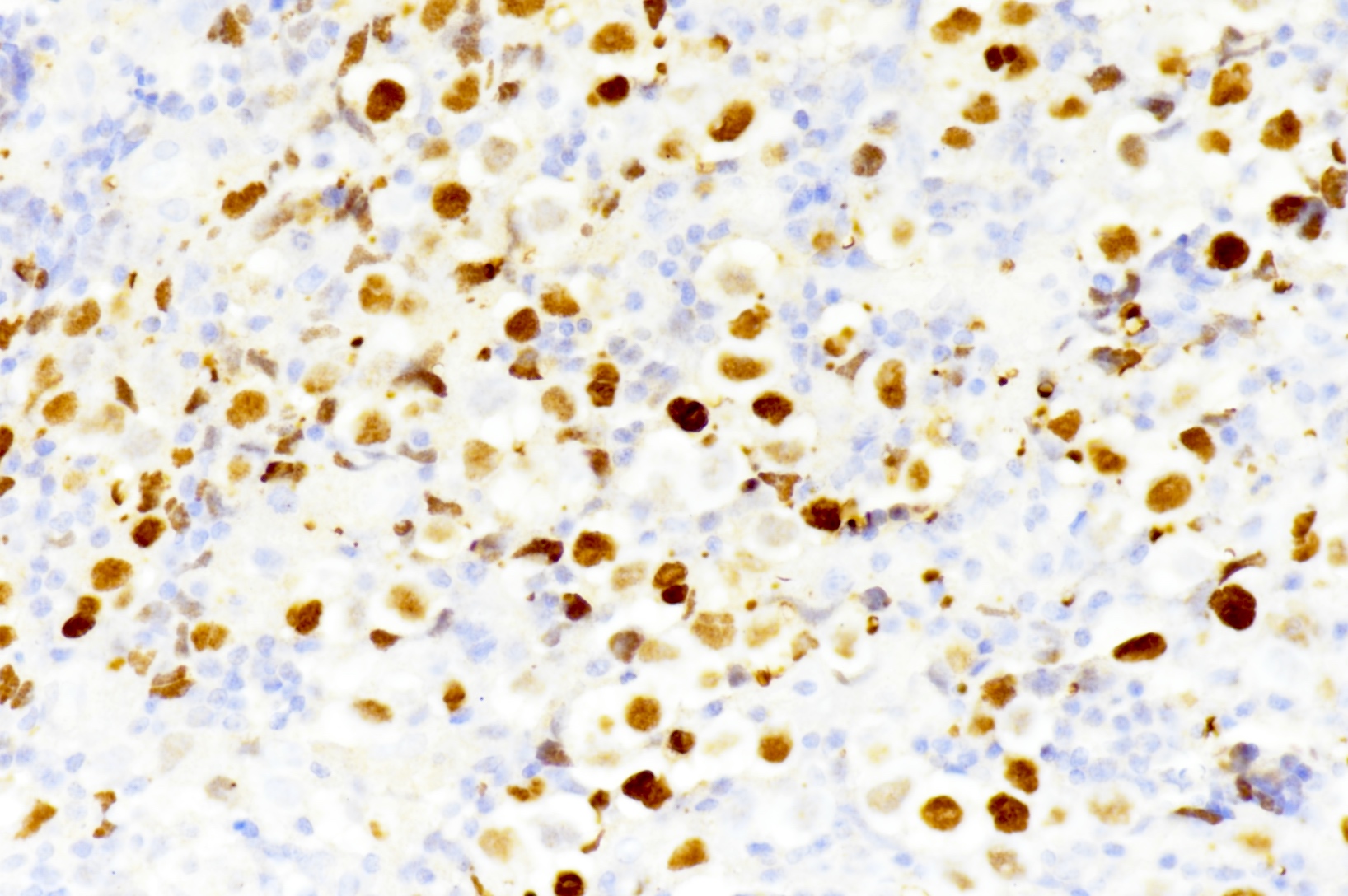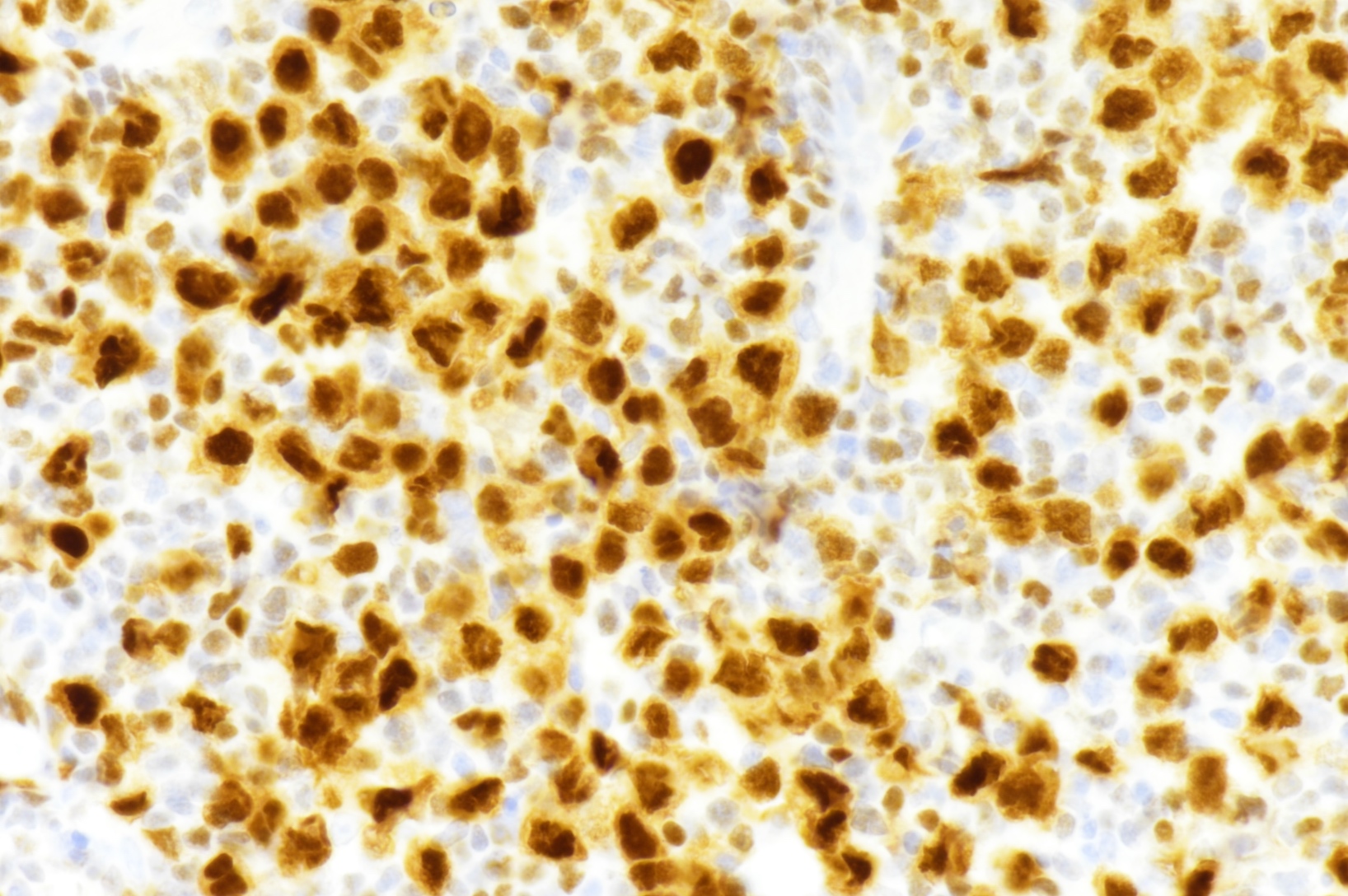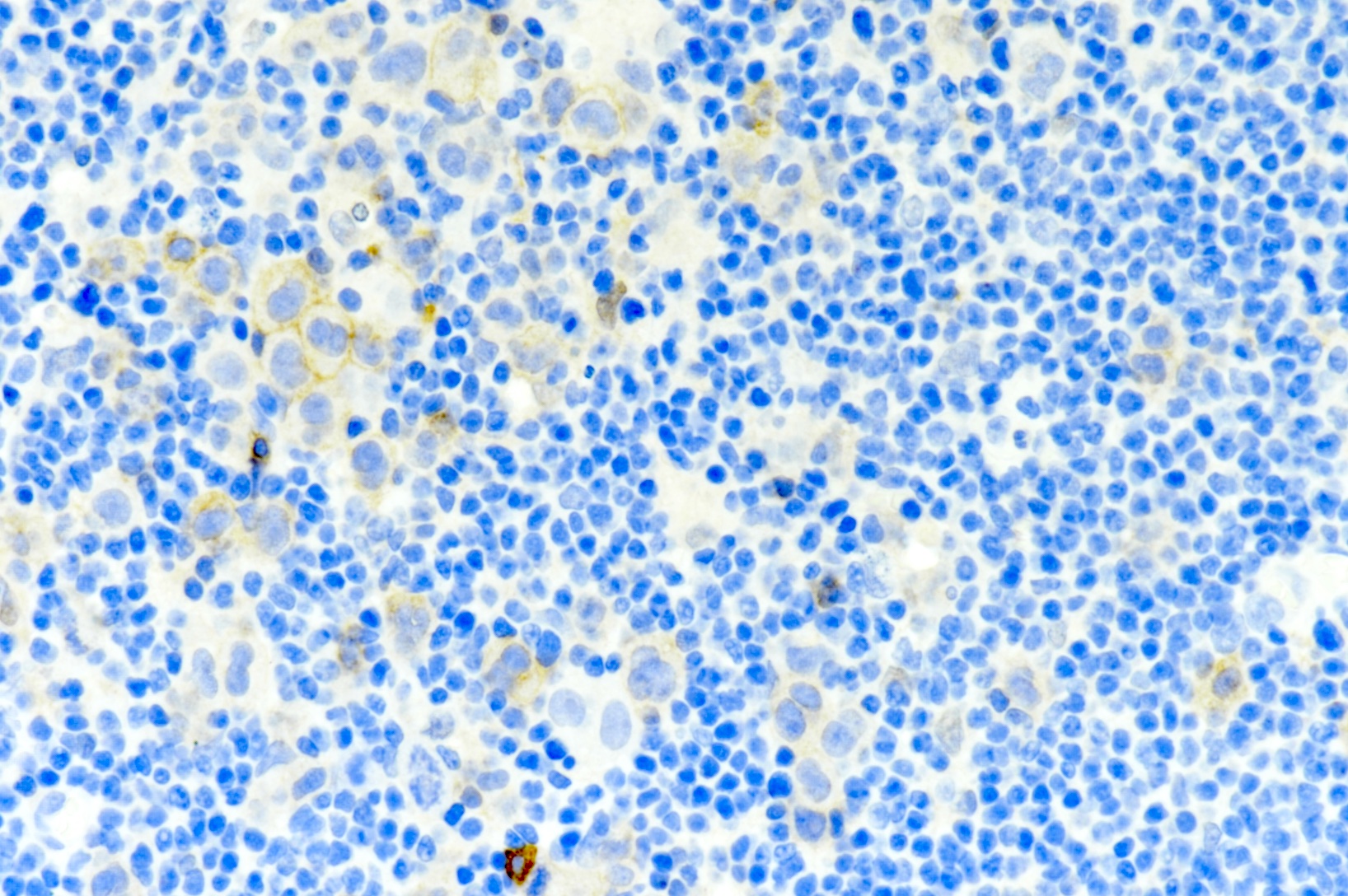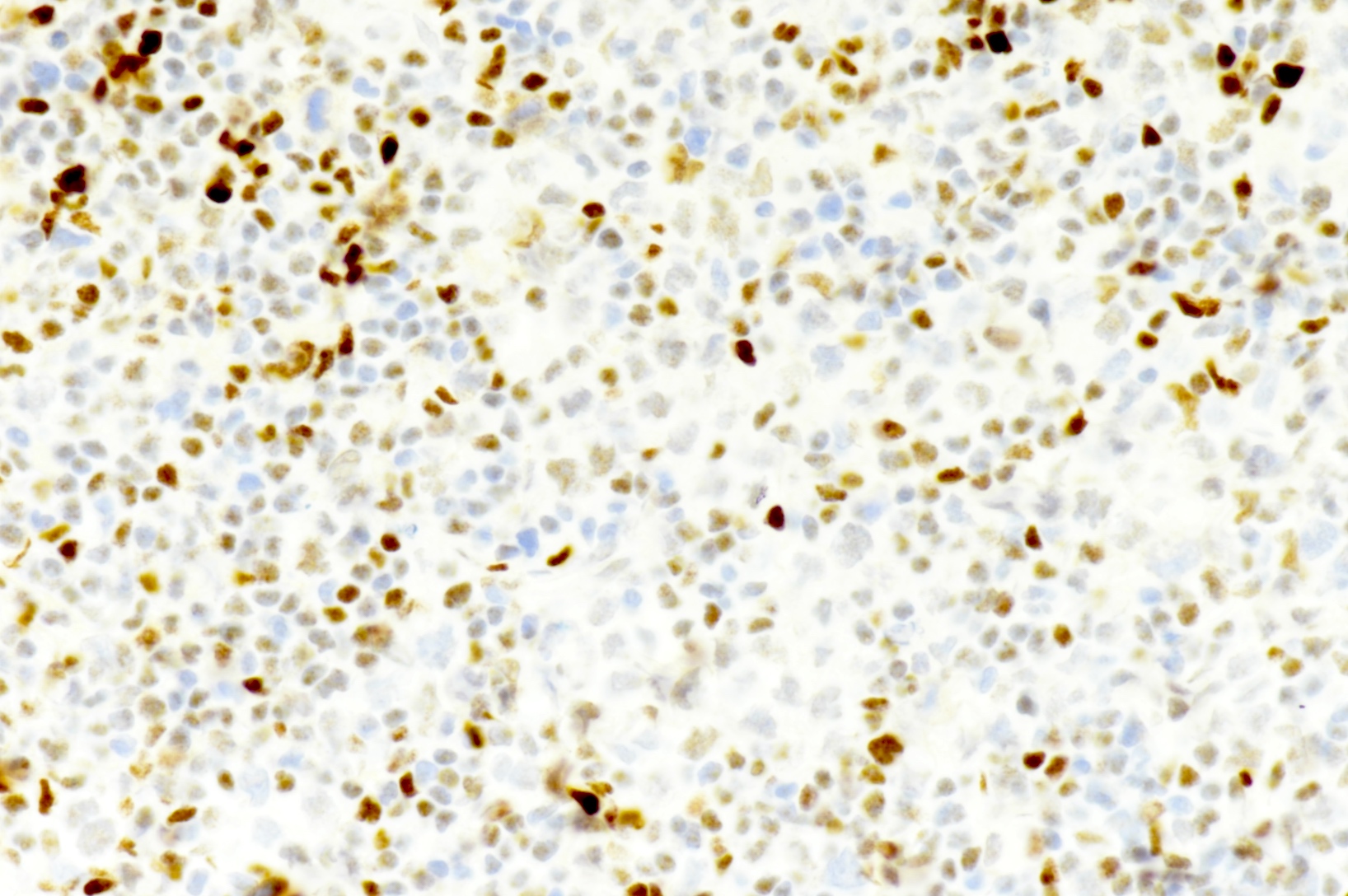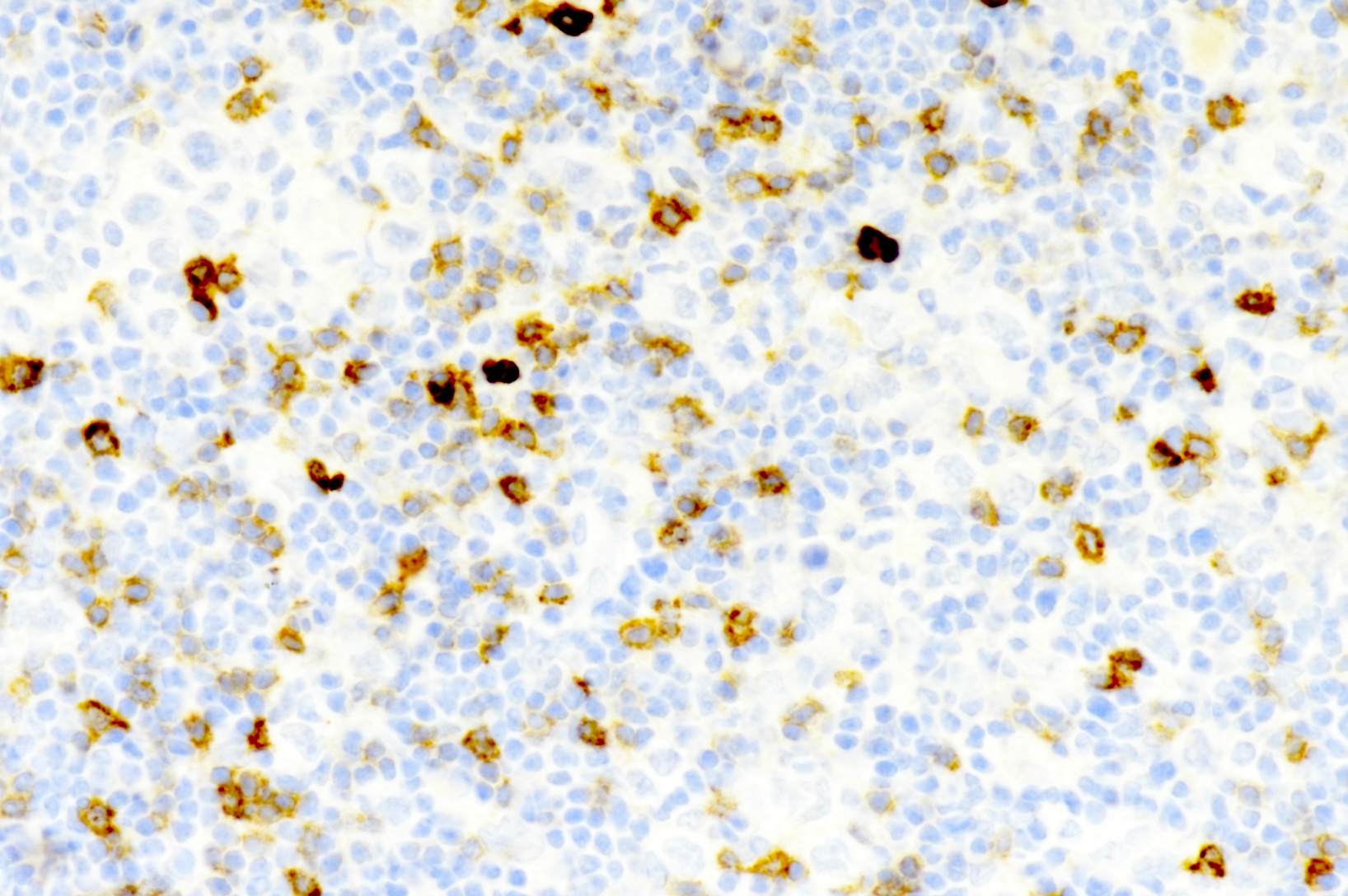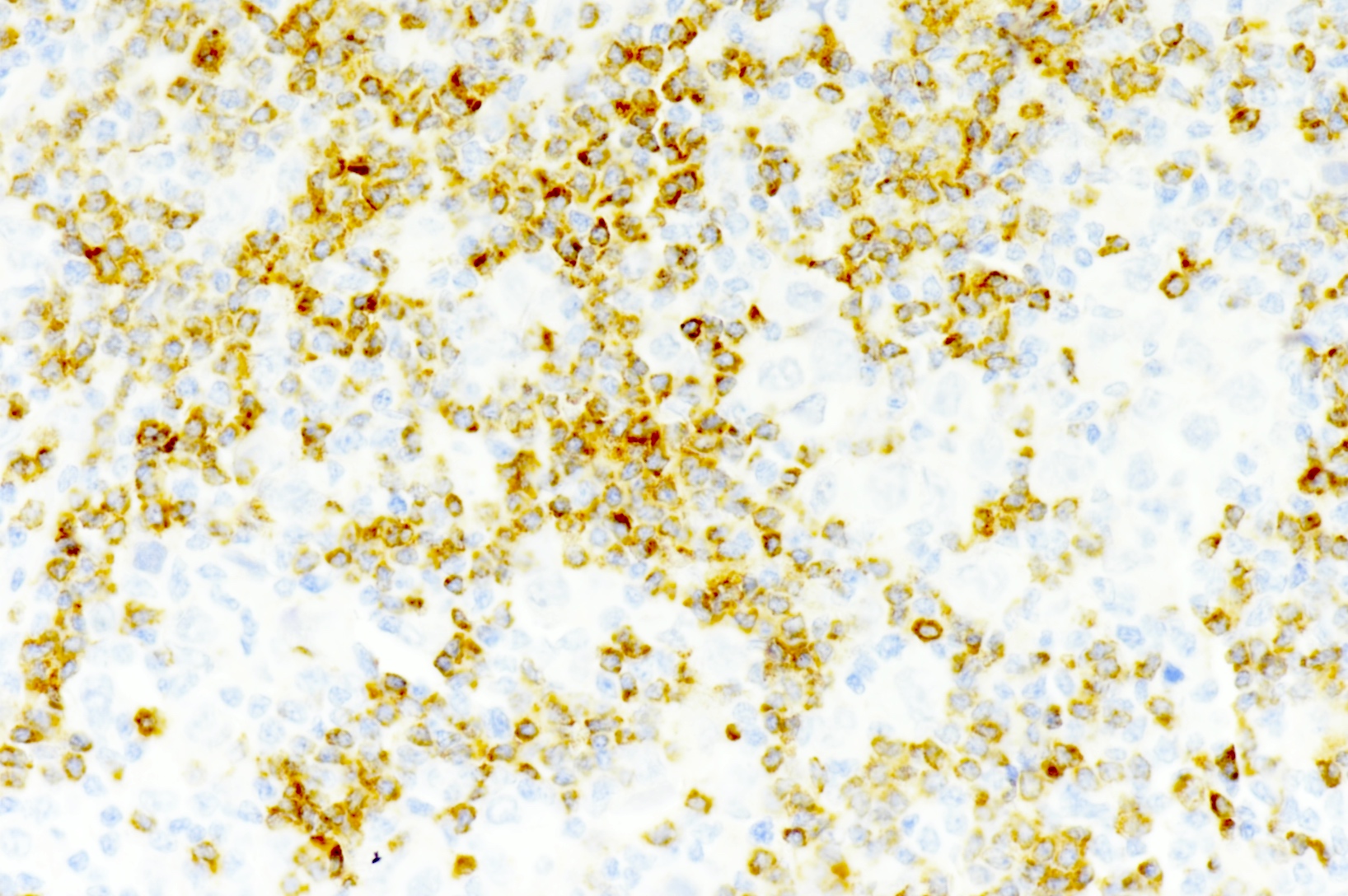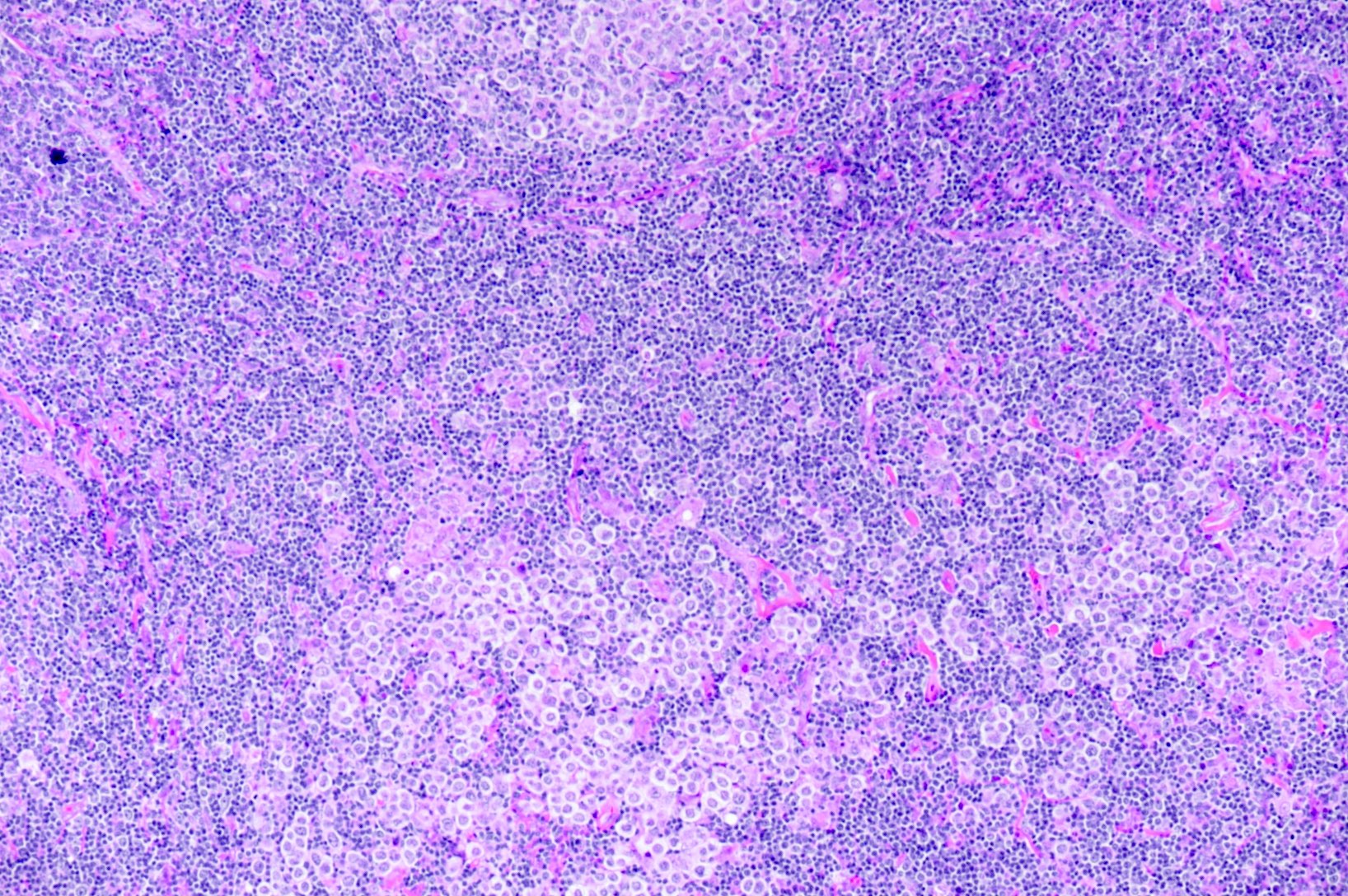Table of Contents
Definition / general | Essential features | Epidemiology | Sites | Pathophysiology | Etiology | Clinical features | Diagnosis | Radiology description | Prognostic factors | Case reports | Treatment | Microscopic (histologic) description | Microscopic (histologic) images | Positive stains | Negative stains | Molecular / cytogenetics description | Sample pathology report | Differential diagnosis | Board review style question #1 | Board review style answer #1Cite this page: Venkateswaran J, Teruya-Feldstein J. HHV8 positive germinotropic lymphoproliferative disorder. PathologyOutlines.com website. https://www.pathologyoutlines.com/topic/lymphomaHHV8germinotropicLPD.html. Accessed April 1st, 2025.
Definition / general
- Monotypic HHV8 positive lymphoproliferative lesion occurring characteristically in HIV negative patients
Essential features
- Coinfection of HHV8 and EBV
- Immunocompetent patients
- Localized lymphadenopathy
- Aggregates or single plasmablasts / immunoblasts in the germinal centers
- Good prognosis
Epidemiology
- No known epidemiological association
- Usually seen in HIV negative, immunocompetent patients
- Occasional cases seen in HIV positive patients
Sites
- Involves lymph nodes
Pathophysiology
- Uncertain contribution of EBV in pathogenesis
- Occasional EBV negative cases
- Elusive role of vIL6
- Activation of IL6 receptor signaling through vIL6 and human IL6 may play a role in differentiation of Kaposi sarcoma associated herpesvirus infected B cells into plasmablasts and development of lymphoproliferative lesions (Am J Surg Pathol 2017;41:795)
Etiology
- Unclear origin of the plasmablasts; possible theories include:
- Migration of neoplastic B lymphocytes into germinal centers by ecotaxis / homing (Am J Surg Pathol 2017;41:795)
- Somatic hypermutation and intraclonal variation, favoring a germinal center derivation (Am J Surg Pathol 2017;41:795)
Clinical features
- Localized, sometimes multifocal lymphadenopathy in otherwise healthy individuals
Diagnosis
- Lymph node biopsy
- Morphology and immunohistochemistry
- Immunophenotype and molecular studies
Radiology description
- Very few descriptions of radiological features reported so far
Prognostic factors
- Overall favorable response to chemotherapy and radiation
- Rare reported cases progressed to high grade HHV8+ EBV+ lymphoma (Am J Clin Pathol 2017;147:171, Am J Surg Pathol 2017;41:795)
Case reports
- 20 year old woman with localized lymphadenopathy (BMJ Case Reports CP 2020;13:e231640)
- 49 year old patient with lymphadenopathy (Ann Pathol 2014;34:373)
- 75 year old man with an incidentally discovered neck mass (Int J Hematol 2012;95:107)
Treatment
- Treatment approach is variable; some cases have not been treated, while others have been treated with surgery alone or with chemotherapy and radiation
- Potential therapeutic role of PD1 / PDL1 immunotherapy has been suggested due to the PDL1 expression and it requires additional research
Microscopic (histologic) description
- Small aggregates of or single plasmablasts / immunoblasts confined to the germinal center (Ann Hematol 2020;99:2243)
- These are large atypical cells with anaplastic features (Int J Surg Pathol 2020;28:804)
- Coinfected by HHV8 and EBV
- Atrophic and hyalinized follicles with vascular proliferation resembling Castleman disease
Microscopic (histologic) images
Positive stains
- Plasmablasts are positive for cytoplasmic monotypic light chain (kappa or lambda), IgA, CD38, MUM1 / IRF4, vIL6, HHV8 / LANA and EBER (Mod Pathol 2020;33:18)
- More than 70% positive for HHV8 / LANA / vIL6 favors diagnosis of germinotropic lymphoproliferative disorder over plasmablastic multicentric Castleman disease (Mediterr J Hematol Infect Dis 2018;10:e2018061)
- Cells are positive for cytoplasmic monotypic immunoglobulin heavy chain
Negative stains
- Negative for LMP, EBNA2 and BZLF1 expression, i.e latency type 1 (Mod Pathol 2020;33:18)
- Plasmablasts are usually negative for CD20, CD79a, PAX5, BCL6, CD10 and CD30
- T cell markers may occasionally be positive (Mod Pathol 2020;33:18)
Molecular / cytogenetics description
- Plasmablasts are polyclonal or oligoclonal
Sample pathology report
- Lymph node, excision / core needle biopsy:
- HHV8 related germinotropic lymphoproliferative disorder
Differential diagnosis
Board review style question #1
Which of the following is true about HHV8 related germinotropic lymphoproliferative disorder?
- There is coinfection of EBV and HHV8
- Usually seen in HIV positive patients
- Positive for LMP1, EBNA2 and BZLF1 expression and negative for cytoplasmic monotypic immunoglobulin heavy chain
- Unfavorable response to chemotherapy and radiation
Board review style answer #1
A. There is coinfection of EBV and HHV8
Comment Here
Reference: HHV8 related germinotropic lymphoproliferative disorder
Comment Here
Reference: HHV8 related germinotropic lymphoproliferative disorder




